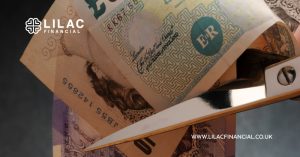It’s a good idea to know how your investments are taxed when selling them. Here are some of the ways you can organise your assets to make them tax efficient.
One of the worst things about earning money is that you have to pay tax. Whether it’s your salary or the interest you’ve earned on your investments, the taxman will almost always take a chunk. If you sell stocks or bonds for a profit, you may need to pay capital gains tax (CGT). The good news is that if you put your investments in a tax wrapper you can shield them from the taxman. Popular wrappers include Individual Savings Accounts (ISAs), Self-Invested Personal Pensions (SIPPs) and investment bonds
What is CGT?
Investments like shares and bonds that don’t sit inside a tax wrapper are subject to CGT. It’s a tax on the profit you make when something you sell increases in value, such as a second home or shares. The amount you pay will depend on your tax band. Basic rate taxpayers pay 10% in CGT, while higher rate taxpayers pay 20%. It’s important to note that it’s the profit that incurs the tax and not the total price you sell the investment for. Therefore, you only have to pay CGT on your overall gains above your tax-free allowance – known as the annual exempt amount.
When do I need to pay CGT?
If you make a profit when selling investments, you may have to pay CGT. You don’t usually have to pay CGT if you give them as a gift to your husband, wife, civil partner or a charity. You also won’t have to pay CGT when you dispose of:
• Investments you’ve put into an ISA or SIPP
• Shares in employer share incentive plans (SIPs)
• UK government bonds
• NS&I Premium Bonds
• Qualifying corporate bonds
• Employee shareholder shares (depending on when you received them)
How can I save on my tax bill?
Tax will impact the amount you get back from your investments. So if you want to get the highest return possible taking advantage of tax-efficient wrappers is crucial. A tax wrapper is a vehicle that can be put around a portfolio of assets to protect your investments from tax, providing the money stays within the wrapper.
There are different types of tax wrapper, with ISAs and pensions being the two of the most common you will come across. Both offer generous tax benefits that everyone is entitled to. Money put into an ISA account can grow free from tax, meaning you don’t pay tax on capital gains, dividends or income made on any gains from your investments. A self-invested personal pension (SIPP) is a wrapper that allows you to control the specific investments you make in the fund. Just like ISAs, with a SIPP your investments can grow free from capital gains, dividend and income tax.
Insurance bonds
What are the options after you’ve maxed out your ISA and pension contributions? With the CGT allowance shrinking and the tax on dividends increasing, insurance bonds are becoming popular again. They are investments that use insurance policy law. What this means is that the equivalent to CGT is paid within them for you and dividends are untaxed.
The investments that you can hold within them are the same as those that you would have in your ISA or pension. After the 2022 Autumn Statement, the tax case for many people is more in favour of an investment bond than an unwrapped investment (the latter being subject to higher rates of CGT and dividend tax).
How much CGT do you have to pay?
In the 2022/23 tax year you can make £12,300 in capital gains before you have to pay CGT and £6,150 for trusts. Couples can double this by combining their allowances. This means that if you earn profits below this level across the tax year, you don’t have to pay CGT.
However, the capital gains threshold will fall to £6,000 from 6 April 2023. This lower threshold will be in place for a year before being halved to £3,000 in April 2024. As a result, more people will have to pay tax on their investment gains.
Next steps
With the changing CGT rules over the next few years, it is important that any investments you have that aren’t within an ISA, pension or investment bond are reassessed. You can use a tax wrapper calculation tool to work out what is the best route for you, in terms of CGT and dividends.


Write A Comment